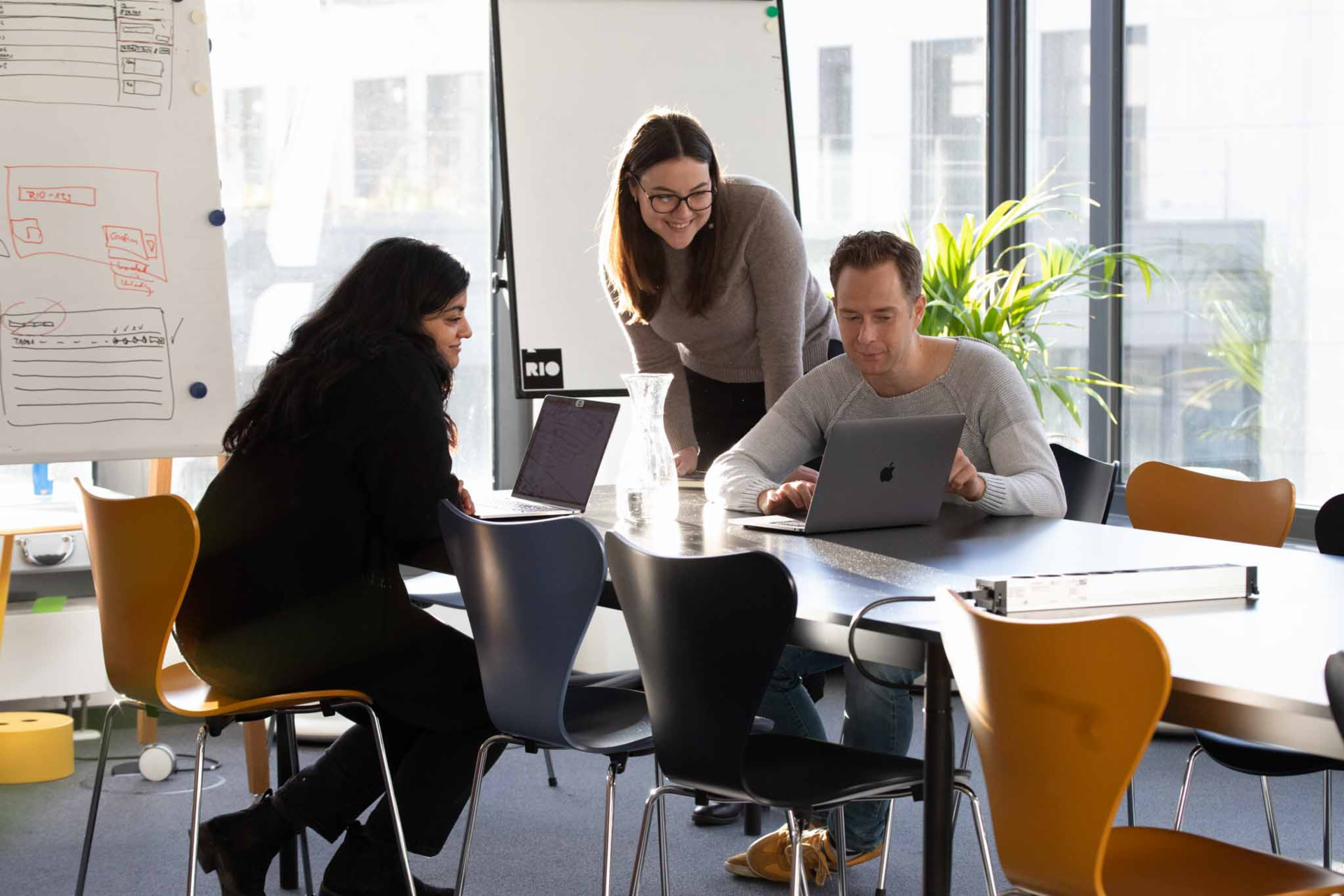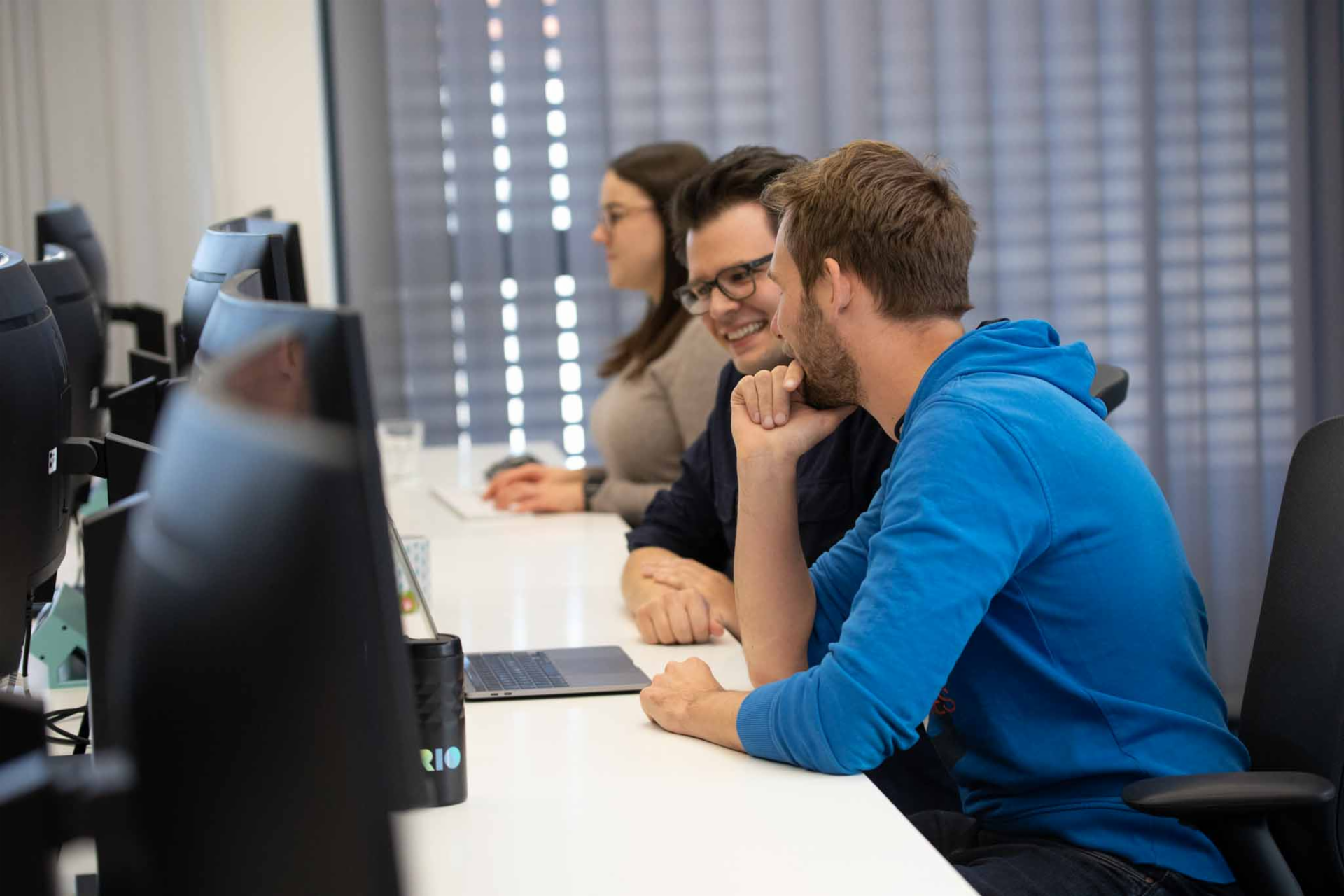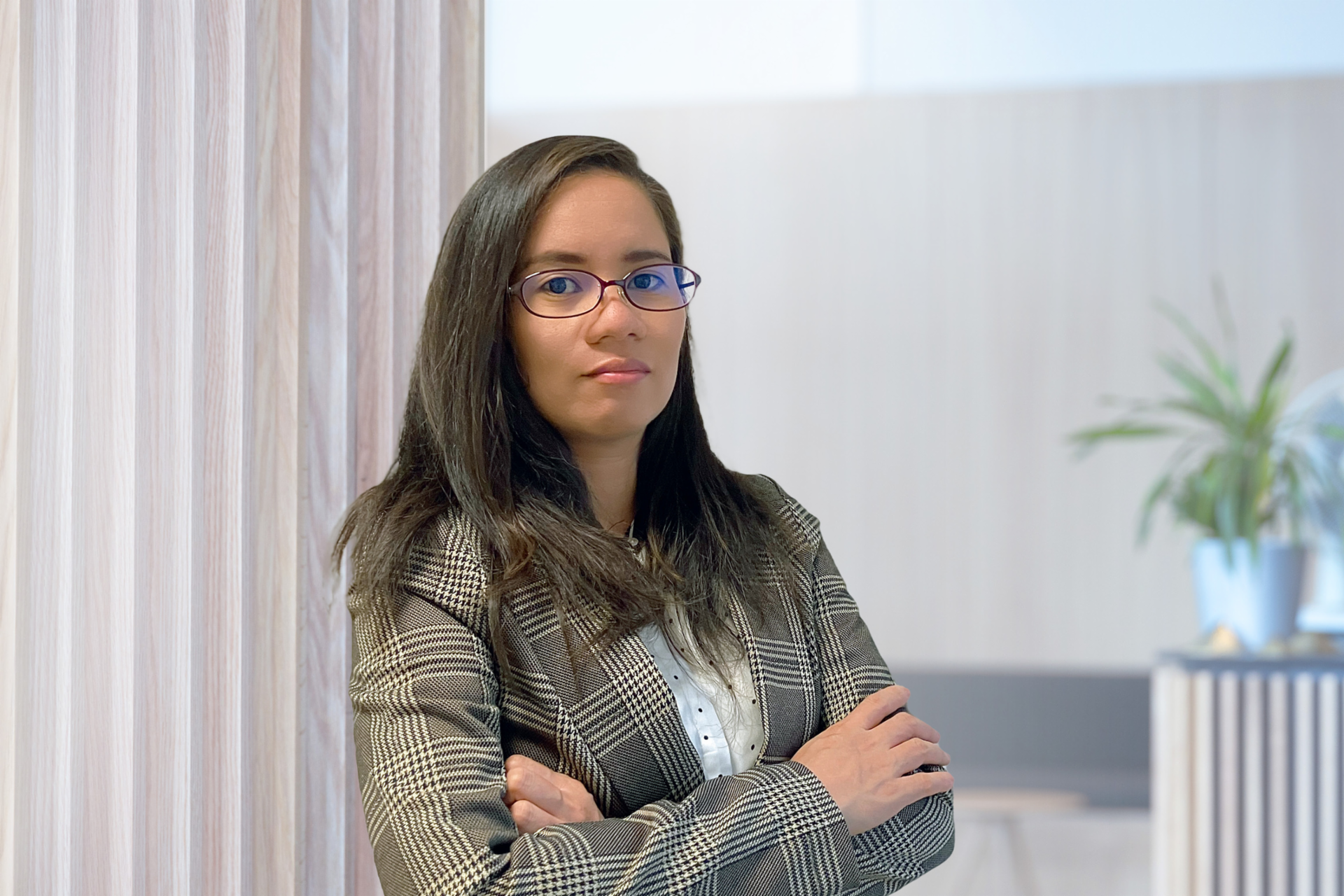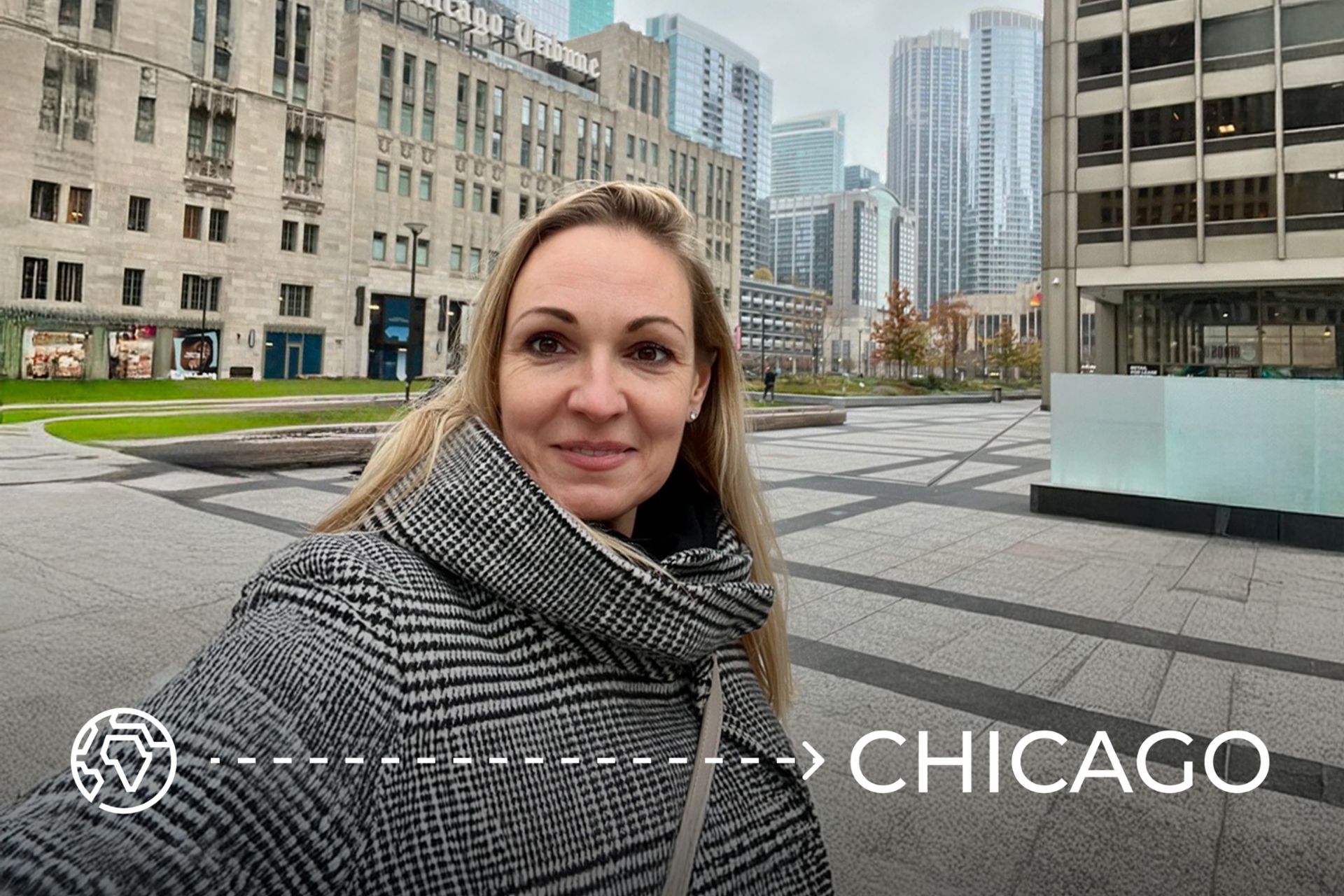Hi Feona, to begin with, it would be interesting to find out a bit more about your background. Where did you grow up and what did you study? And what brought you to Munich?
I grew up in the city of Iligan, which is in southern part of the Philippines. Then I moved to Cebu City to study at the University of San Carlos where I graduated with a bachelor’s degree in computer engineering.
Ever since I was small, I knew I wanted to study engineering, as I’ve always been curious about electronics and technology. I remember when I was very little, I received a robot for Christmas. I was so fascinated by how it worked that I dismantled it, but then couldn’t put it back together again. After that, my mum didn’t buy me any more electronic gadgets!
While living in the Philippines, I was in a long-distance relationship with my boyfriend who was working in Munich. I was ready for a change, so I resigned and moved to Waldkraiburg, Bavaria, where he lives and started my new career here in Germany.
"Ever since I was small, I knew I wanted to study engineering, as I’ve always been curious about electronics and technology."Feona Samson, Full Stack Engineer at RIO
What is a Full Stack Engineer? What drew you to the profession?
A Full Stack Engineer can work on different parts of software applications, as they have the combined knowledge of frontend (what users see) and backend (how the data is saved and processed), as well as operational oversight (building the software application’s infrastructure and monitoring it). A Full Stack Engineer is also able to work on different cycles of software engineering that includes planning and implementation or coding, testing, and maintenance.
Since I’ve been working in software development for around 17 years, my experiences make me well rounded. It comes from my curiosity about the architecture and infrastructure that build up a software system, along with my exposure to frontend development, where I had close communication with frontend engineers while I worked as a backend engineer.
Every company has a different tech stack. A tech stack is a combination of different technologies and software used to build and run a website, application, or any digital product. Some tech stacks are Cloud-based, others offer their own infrastructure. Here at RIO, we work in the Cloud because this enables us to provide more efficient and productive digital solutions to customers and their businesses by utilizing real-time data and information.
On the technical side, working in the Cloud makes developments more flexible and ensures they can be achieved more quickly. This way, development processes can focus more on business solutions rather than technical solutions, as they are easily set up and scaled up in the Cloud.
What was your motivation for moving from backend and people management to the tech side?
Previously, I managed engineers in my role as a technical consultant, while also being a backend engineer. This meant I had to split my time 70% doing management as well as technical consultant tasks (such as providing solutions for new features or projects), and the remaining 30% as a backend engineer, mainly for maintenance tasks.
While doing different roles, I found myself more engaged and motivated as a technical consultant and felt I would prefer to also be involved in implementation as well. I decided to go in another direction: one where I would stay on the technology side by becoming a Full Stack Engineer. I’m very happy with my decision so far as this is my passion.

Can you describe the range of responsibilities you have and the stages of software development you are involved in?
Firstly, the most important role is that of the support head because we need to make sure that each of the software applications within our team’s domain are up and running. This is critical for the business. We have alarms that alert us when one of our applications has encountered some kind of problem. We take it in turns to be the support head so each team member can gain experience of this role. The support head is the first contact person when requests are made so that the rest of the team can focus on their main tasks.
Every member of the team is also involved in each stage of software development. We also meet and discuss analysis and planning. In planning, we break down our requirements into subtasks. To give one example, software or architecture design is one of the subtasks from our planning sessions. Any member of the team can take this on if they have capacity. They will then present the result to the rest of us to get the agreement of the team. Besides this, software development and coding include testing, deployment, and peer reviews.
"In any team, the most impactful colleagues are real team players."Feona Samson, Full Stack Engineer at RIO
How do you impact the overall user experience of RIO's digital products and services, as well as the development of innovative solutions?
At RIO we offer a range of different services, such as fleet management, and each service has its own team. Owners of MAN trucks can add a range of additional Cloud-based functionalities, for example. Once purchased, these services are then activated by the fleet managers, who are responsible for ensuring the trucks can use these features. My team connects all these together – we’re the backbone that enables Cloud-based services across the product line.
In any team, the most impactful colleagues are real team players. They’re able to quickly define priorities, identify a potential solution within a given timeframe for a project or support request, and know an overhaul or refactoring of an existing solution is required to incorporate innovative features or requirements. When working on tasks, we’re free to give suggestions on what is best for a better customer experience.
Keeping the tech stack up to date is an important responsibility at RIO. Can you explain how you and your team stay informed about new technologies and determine which ones are relevant for adoption?
In our team, we have a technical review where we discuss possible improvements. Whenever we agree to adopt something new (that is non-urgent), the support head will take responsibility for its implementation during a quieter period. The libraries used in our system are also automatically upgraded. Whenever these upgrades fail, we receive an alert and check the cause of it before making the necessary modifications to be able to proceed with the upgrade.
Individually, we also make time to read articles or books that interest us or join conferences about the latest technological trends. We then share our findings with the team during our technical review. AI is a hot topic right now, and we have an initiative set up where a group of colleagues are researching it. Having tried it out and listened to feedback from my industry peers, the consensus is that, while AI is helpful for certain common processes, it cannot replace Full Stack Engineers.

Finally, the tech industry has traditionally been male dominated, although this is changing. What advice would you have for women who want to get into your field?
If tech and engineering is your passion, then I would say just go for it! Do what you want to do and continue to shine. For me, it’s really beneficial to be part of a team with diverse people that have a good mix of different backgrounds and skills. In the tech industry, it’s all about effort, intelligence, showing the right attitude, and having a willingness to grow. Reach out, build relationships, and seek to be mentored by other women who are also in the industry.


